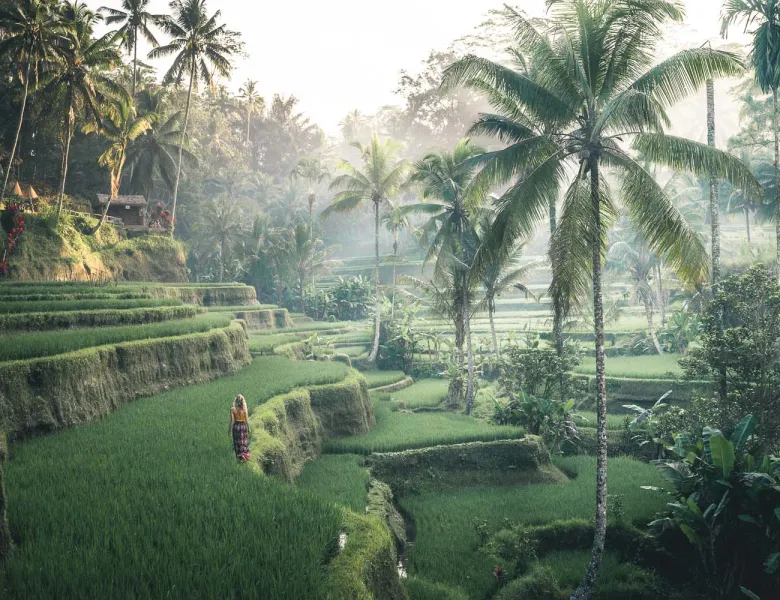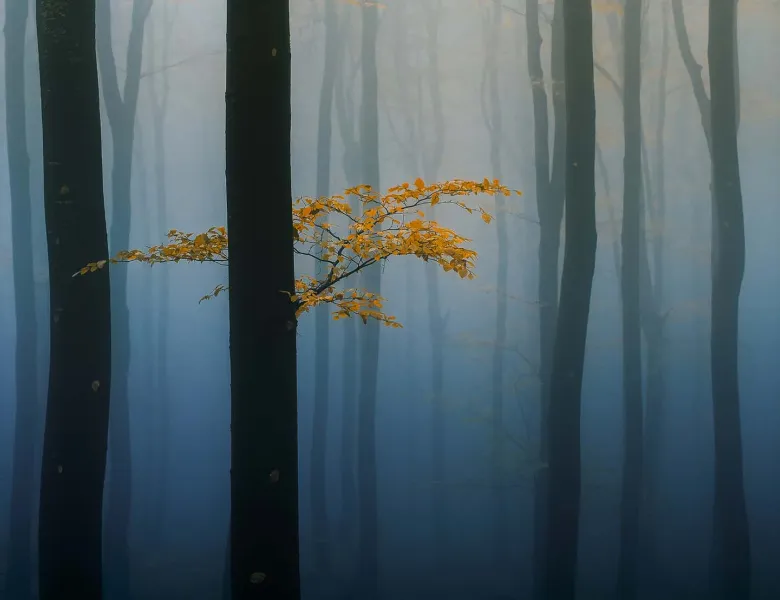These are most amazing photos of starling murmurations
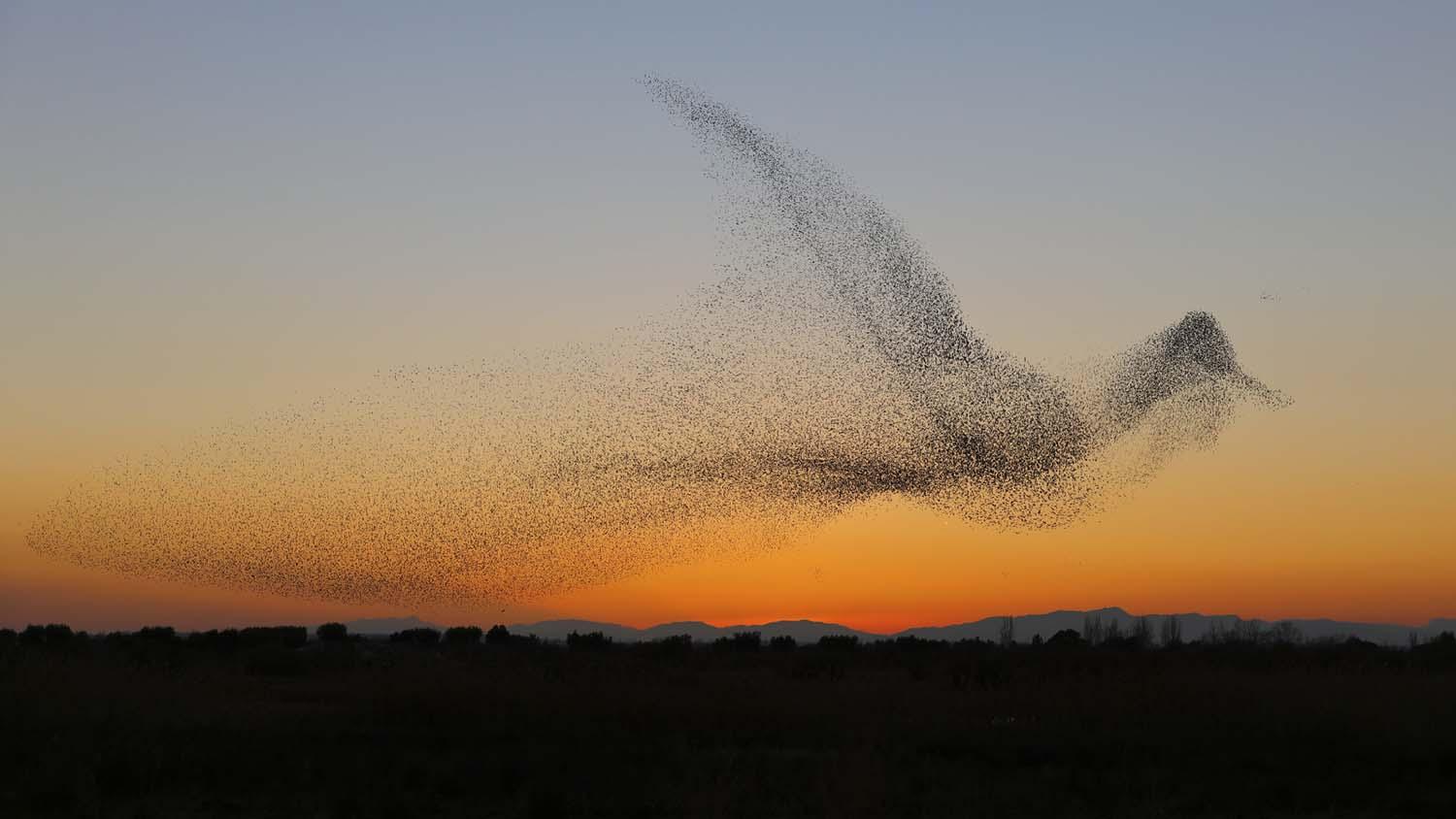
Daniel Biber is a semi-professional photographer and aerospace engineer, living in Hilzingen, Germany. He owns a highly specialised bicycle business. He says of taking photos: "When I started in the early eighties, I was using analog formats such as slide and black-and-white film, focussing mainly on landscape and nature photography. It was not until my transition to digital in 2008 that I became more interested in wildlife photography and birds in particular. But I’m not fixed on those subjects, I´m also interested in architectural, people, abstract or technical photography."
Since he started participating in photographic competitions in 2015, his photos have gained recognition in national and international competitions, including the 2016 Swiss Ornithological Institute Sempach photo competition (two times finalist) and 2017 (overall winner and a 2nd place in one category). His images have also been part of exhibitions, including the Euronatur trust online (international photo competition 2017) and the relating print exhibition (Bavarian Forest/ Germany).
Daniel was shortlisted in the Professional Natural World & Wildlife category of the 2018 Sony World Photography Awards.
Hi Daniel. Thanks for talking with us. Firstly, tell us a little about you and your background in photography
I bought my first SLR camera to make astronomic photos with my Newton telescope, but the optical quality was not sufficient and so it was sold. I then started with photography in the early eighties. I was using analog formats such as slide and black-and-white film, focussing mainly on landscape and nature photography, but I also did experimental photography like for example nude and laser-based holographic photography. All b&w processings were made by myself in a darkroom. During my aerospace studies, I was also working with several photographic techniques to visualize complex fluids behaviour. It was not until my transition to digital in 2008 that I became more interested in wildlife photography and birds in particular. But I'm not fixed on those subjects, I'm a generally curious person interested in multiple photographic domains.
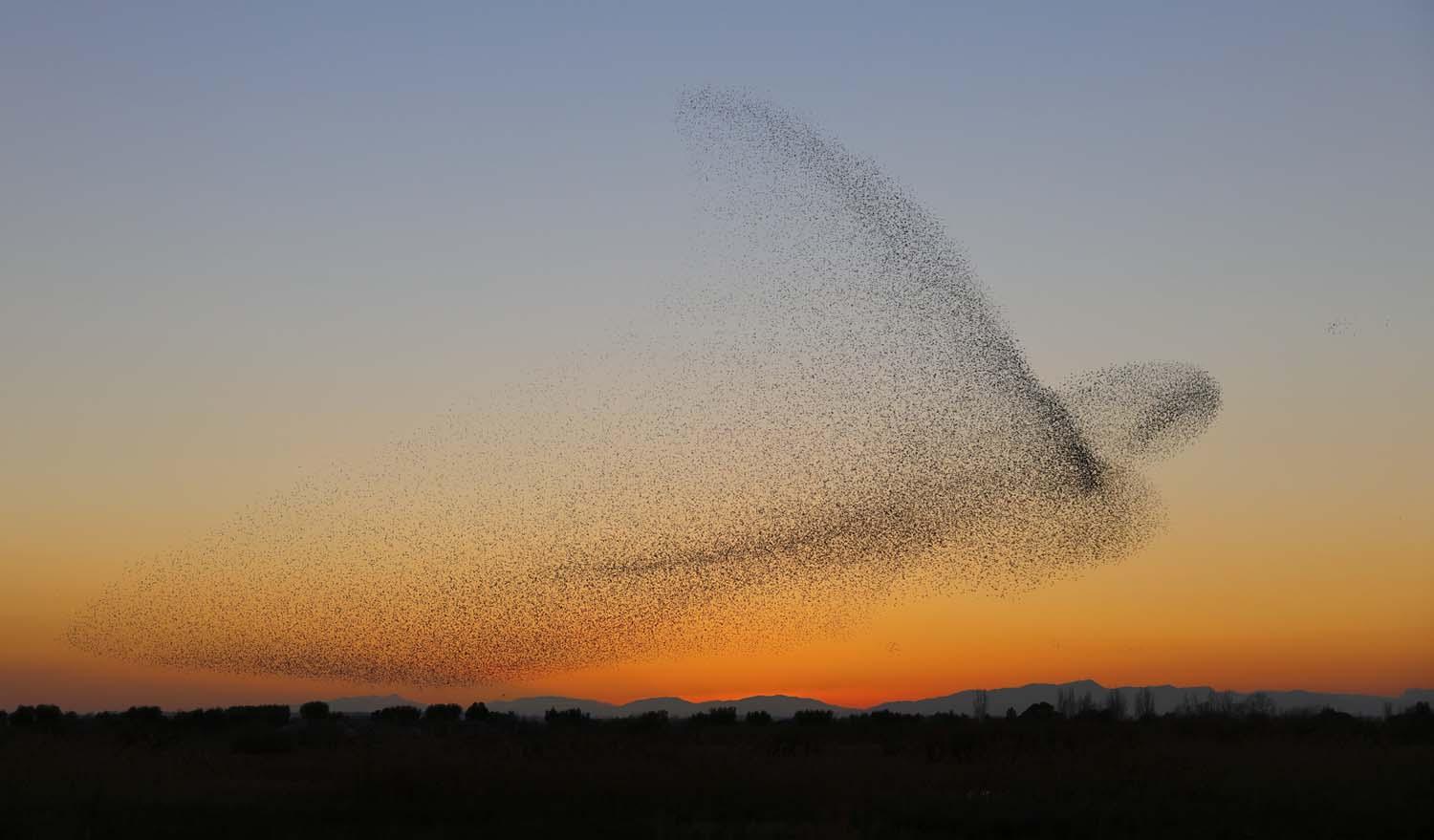
Why photography? What does the medium mean to you?
In the very early years I started with drawings to express my view on interesting things but I found it always exciting to have a technical component to be creative. That and the possibility to document certain incidents quick in a realistic and regardless individual way, were the key to start with photography. The possibility to act with light, colours, structures, and abstractions became more and more important over the years. The development of digital photography enables more creativity and often a better quality.
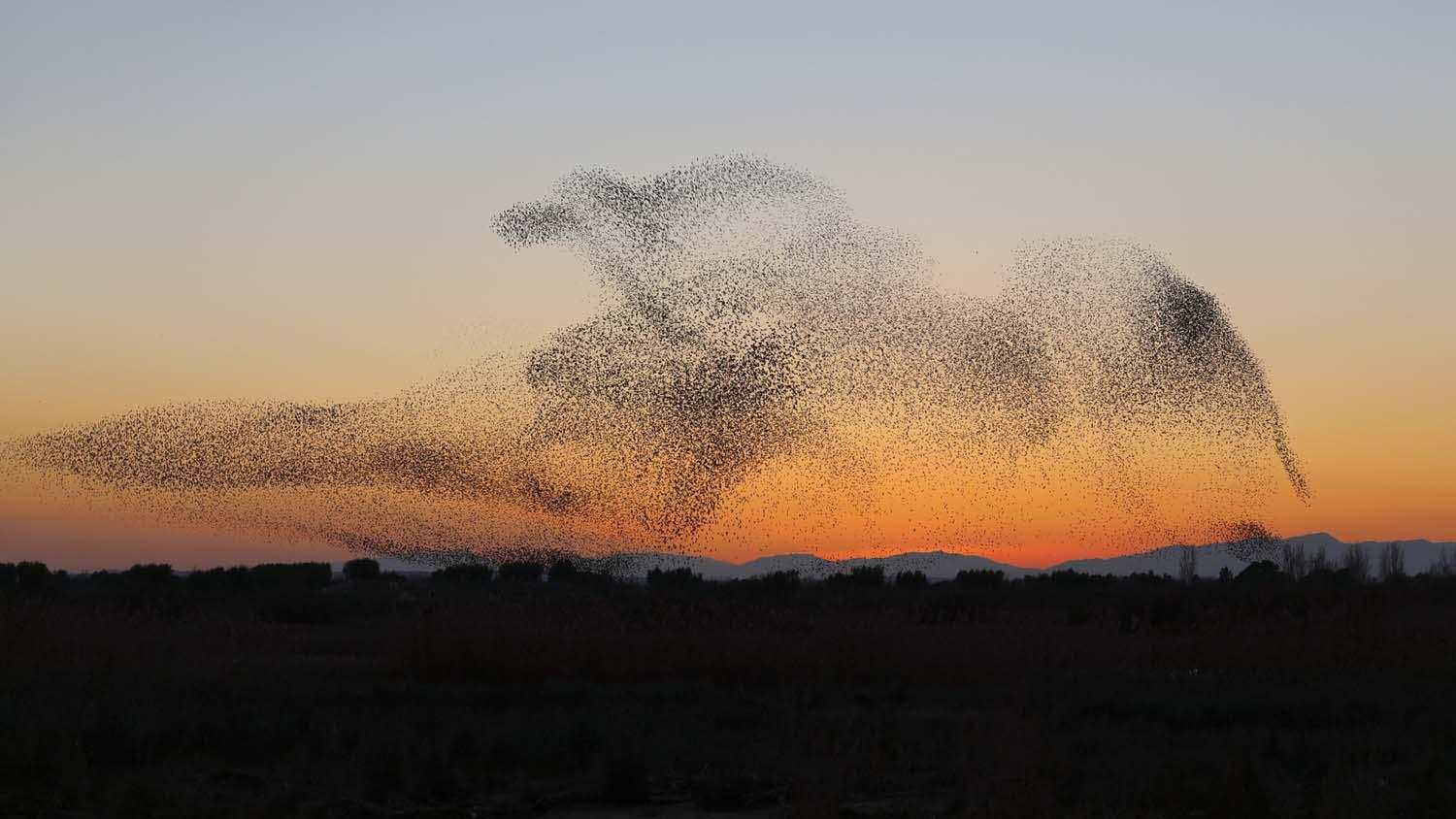
Congratulations on the shortlist this year! Tell us more about the incredible series of images of starling murmurations. Some people are having a hard time believing this is real! Please ease their minds and tell us more...
Thank you! This series of images was captured in a 10-second window on the 31st December 2016 near Sant Pere Pescador in Catalonia, Spain. For years I have observed huge flocks of starlings on the Costa Brava. It took me several days to scout out the location where the starlings gather at sunset to roost. I shot thousands of pictures and had the great luck to capture the moment that the murmuration took on the shape of a large flying bird! The shape then dissipated, and the birds began to reshape ending up as another impressive bird shape.
After winning last year's photo competition of the Swiss Ornithological Institute in Sempach with the picture "starling murmuration part 5", I often heard the reproach it must be a fake - that will never happen in reality! But the jury had proved the authenticity based on the orginal RAW files to ensure there were no manipulations! That also was one of the reasons to publish a complete series of the flocks, where you can see how the different shapes appear and dissipate - no retouching was necessary! It would have been too much work to manipulate the pictures - the complete series includes 26 images!
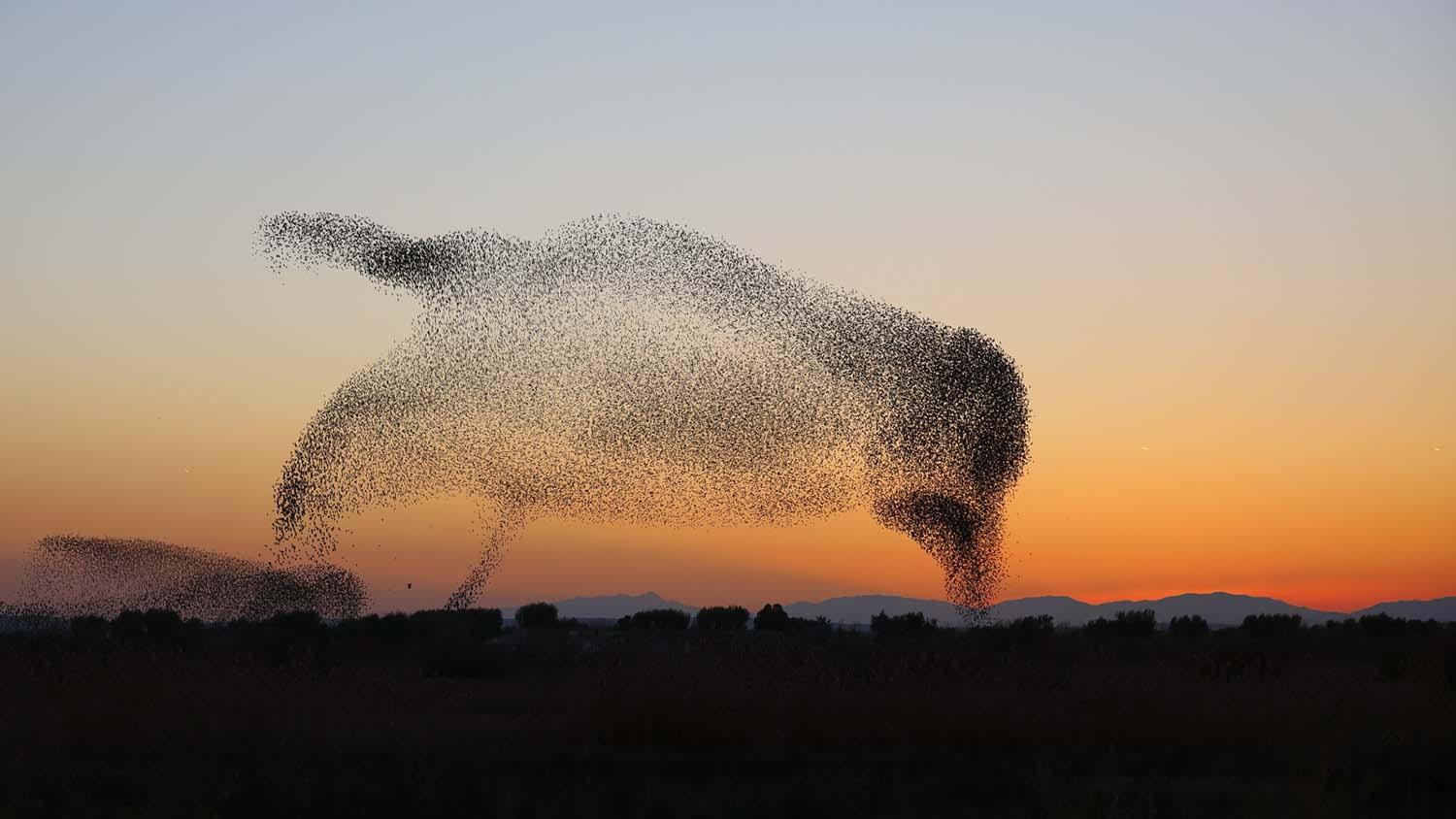
Do you have a photographic philosophy?
I am a photographic generalist - everything could be interesting but for me it is important to compose my pictures in a natural and aesthetic way - that could be art. I don't like morbid styles and it's not my intention to do social critisim or street photography. I want to reveal the hidden beauty of common things shown from an unusual perspective or point of view. Sometimes I want to tell a story but another time it could be a single snapshot capturing the magic of a moment. I also prefer to work with available light under preexisting conditions and I have the intention not to disturb animals as much as possible and preserve the environment.
I have always stayed true to my analogue roots, by the way – a good picture should be created while taking the shot, and not afterwards on the computer. That is why I limit image processing to a minimum except for especially creative and artistic images. Retouchings are extremly rare and if I did so, it is always clearly communicated!
danielbiber.com
worldphoto.org/swpa






